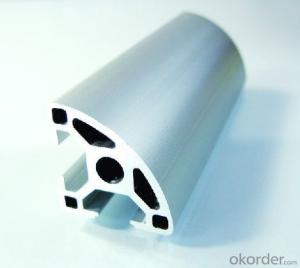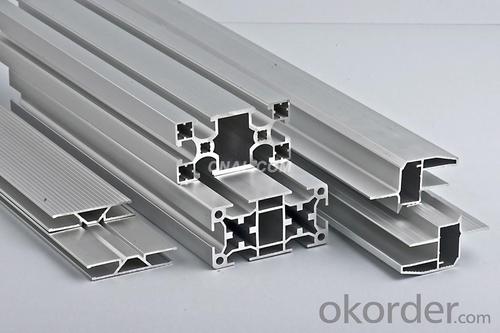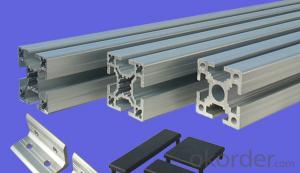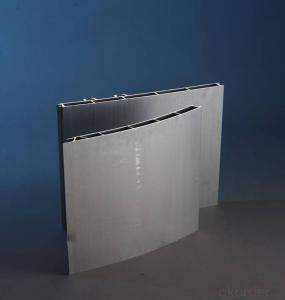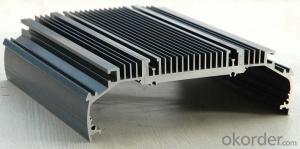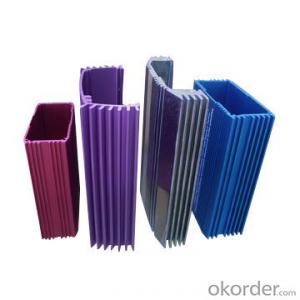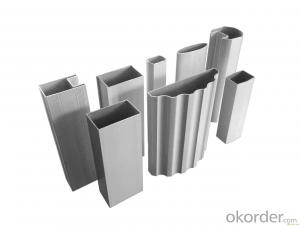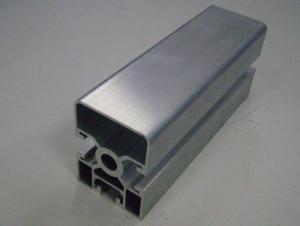Aluminum Door Profiles - Cheaper Aluminium Profile Extrusion
OKorder Service Pledge
OKorder Financial Service
You Might Also Like
Aluminium is a relatively soft, durable, lightweight, ductileand malleablemetalwith appearance ranging from silvery to dull gray, depending on the surfaceroughness. It is nonmagnetic and does not easily ignite. A fresh film ofaluminium serves as a good reflector (approximately 92%) of visible lightand an excellent reflector (as much as 98%) of medium and far infraredradiation. The yield strength of pure aluminium is 7–11 MPa,while aluminium alloys have yield strengths ranging from200 MPa to 600 MPa. Aluminium has about one-third the densityand stiffness of steel. It is easily machined,cast, drawn and extruded.
Features:
Material | Alloy 6063,6061,6005or according to customer’s choice |
Temper | T3, T4, T5, T6 |
Surface | Anodize, electrophoresis, powder coating, PVDF coating, wood grain painting, matted, etc. |
Length | Coating 6.5 meters, Anodizing 6.5 meters, Mill finish 5 meters |
Application | Industrial, electrical equipment(TV set, air conditioner, refrigerator, computer), decoration,construction, transportation |
Custom Made | We can package following with customer's request. |
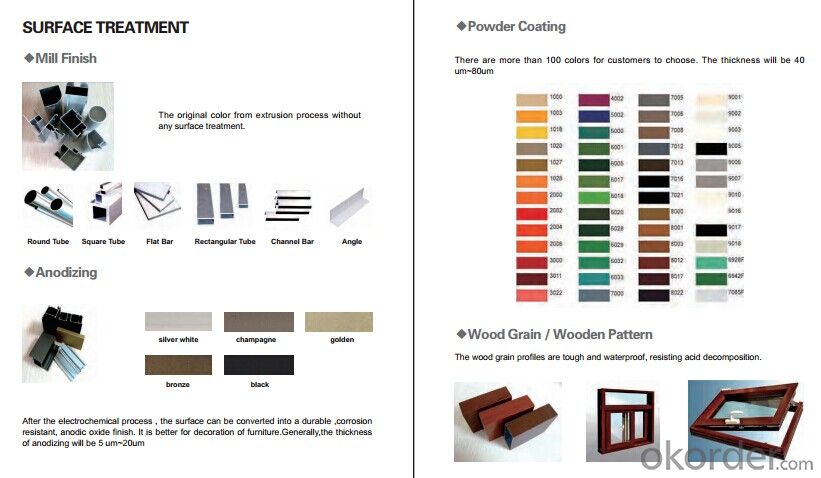

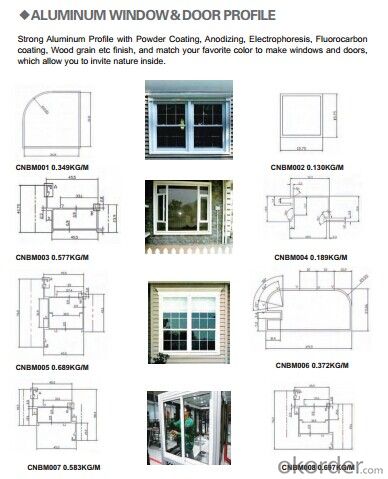
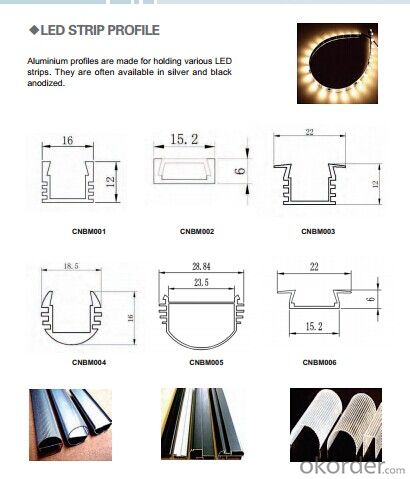
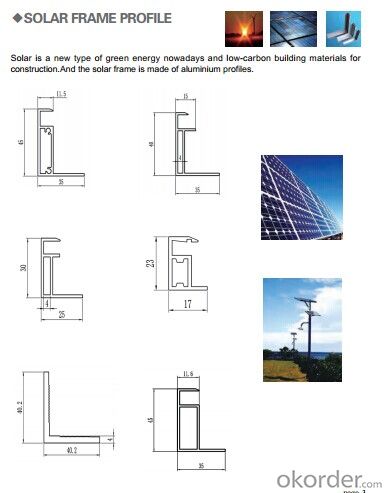
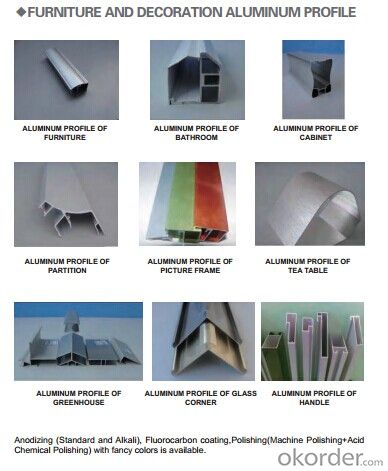
- Q: What precautions should be taken while handling aluminum profiles to ensure safety?
- <p>When working with aluminum profiles, it's important to take several safety measures. Always wear appropriate personal protective equipment (PPE), including safety glasses to protect your eyes from flying debris, gloves to protect your hands, and a dust mask to prevent inhalation of dust particles. Ensure that the work area is well-ventilated to avoid inhaling aluminum dust. Use proper tools for cutting and shaping aluminum profiles to minimize the risk of injury. Keep the work area clean and free from clutter to prevent tripping hazards. Be cautious when handling sharp edges and ends of cut aluminum profiles. Lastly, be aware of the weight of the aluminum profiles to avoid back injuries when lifting.</p>
- Q: Can aluminum profiles be used for DIY projects or home improvement?
- Yes, aluminum profiles can be used for DIY projects or home improvement. Aluminum profiles are versatile and can be easily cut, shaped, and joined together to create various structures and components for different applications. They are lightweight, yet strong and durable, making them suitable for a wide range of projects. Whether you want to build a custom shelving unit, construct a garden fence, create a frame for a solar panel, or even design a unique piece of furniture, aluminum profiles can be an excellent choice. Additionally, they are resistant to corrosion and require minimal maintenance, which makes them ideal for outdoor projects as well. With the right tools and a little creativity, aluminum profiles can be transformed into functional and aesthetically pleasing additions to your home.
- Q: Is it possible to utilize aluminum profiles for constructing exterior railings and staircases?
- <p>Yes, aluminum profiles can be used for exterior railings and staircases. They are known for their durability, resistance to corrosion, and low maintenance requirements, making them ideal for outdoor applications. Aluminum's strength and lightweight properties also contribute to its suitability for these structures. However, it's important to ensure that the aluminum is of high quality and properly treated to withstand weather conditions and ensure longevity.</p>
- Q: This question asks for methods to prevent aluminum profiles from rusting during the transportation process.
- <p>To prevent rusting of aluminum profiles during transportation, ensure proper packaging with moisture-resistant materials. Use protective films or covers to shield the profiles from direct contact with moisture and humidity. Maintain a controlled environment in the transport vehicle, avoiding high humidity and condensation. Regularly inspect the profiles for any signs of moisture or damage and address them promptly. Additionally, consider using rust inhibitors or anti-corrosion coatings on the aluminum profiles before packaging. Always handle the profiles with care to avoid scratches or damage that could lead to rusting.</p>
- Q: Can aluminum profiles be used in display stand and podium manufacturing?
- Yes, aluminum profiles can definitely be used in display stand and podium manufacturing. Aluminum is a versatile and durable material that offers many benefits for these applications. Aluminum profiles are lightweight yet strong, making them ideal for creating portable and sturdy display stands and podiums. They can be easily customized and fabricated to meet specific design requirements, allowing for flexibility in creating unique and eye-catching display stands and podiums. Additionally, aluminum profiles have excellent corrosion resistance, which ensures that the displays and podiums will look good and last for a long time, even in outdoor or high-traffic environments. Overall, using aluminum profiles in display stand and podium manufacturing is a smart choice due to their versatility, strength, and durability.
- Q: What does "3030W" W mean for European standard industrial aluminum?
- This refers to the 3030 heavy aluminum profiles. General aluminum profile manufacturers will make a number of their own products, European standard 3030 series has a variety of specifications, such as Jing Teng aluminum European standard 3030R, referring to the European standard 3030 fan, 3030G refers to the 3030 GB profiles. In short, look at your own needs,
- Q: This question asks for a comparison between aluminum profiles and other materials used in constructing frames, focusing on their characteristics and performance.
- <p>Aluminum profiles are favored for building frames due to their high strength-to-weight ratio, making them lightweight yet durable. They offer excellent corrosion resistance, which is superior to materials like steel, which can rust. Aluminum profiles are also easy to machine and form, allowing for complex designs. Compared to wood, they are more resistant to weathering and pests. However, they may not have the same aesthetic appeal as wood or the thermal insulation properties of some plastics. Overall, aluminum profiles are a strong choice for structural integrity and longevity in frame construction.</p>
- Q: This question asks if aluminum profiles can be utilized for constructing exterior walls or facades.
- <p>Yes, aluminum profiles can be used for exterior walls or facades. They are known for their durability, low maintenance, and resistance to weather conditions. Aluminum is lightweight, strong, and can be easily shaped into various designs, making it an ideal material for modern architecture. It also offers excellent thermal performance and can be combined with insulation to enhance energy efficiency. Additionally, aluminum profiles can be powder-coated or anodized to provide a protective finish and a wide range of color options, enhancing the aesthetic appeal of the building facade.</p>
- Q: Which is the highest price of aluminum profile 60616063?
- Generally speaking, 6061 of a little higher, but also depends on the quality, whether there is aging treatment, such as T6 status;6063, low silicon content, relatively soft, oxidation effect is better than 6061, suitable for appearance pieces, LED lamp holder, etc.; 6061, cutting performance is good, suitable for structural parts.
- Q: What are the weight capacities of aluminum profiles for shelving systems?
- The weight capacities of aluminum profiles for shelving systems can vary depending on various factors such as the dimensions of the profiles, the design of the shelving system, and the quality of the aluminum used. Generally, aluminum profiles used for shelving systems can support a significant amount of weight. However, it is important to note that the weight capacity of a shelving system also depends on other components such as brackets, connectors, and the type of shelving material used (e.g., wood, glass, or metal shelves). It is recommended to consult the manufacturer or supplier of the specific aluminum profile and shelving system to obtain accurate weight capacity information. They can provide guidelines based on their product specifications, engineering calculations, and testing. Additionally, factors such as proper installation, distribution of weight, and regular maintenance also play a crucial role in ensuring the overall strength and stability of a shelving system.
Send your message to us
Aluminum Door Profiles - Cheaper Aluminium Profile Extrusion
OKorder Service Pledge
OKorder Financial Service
Similar products
Hot products
Hot Searches
Related keywords

